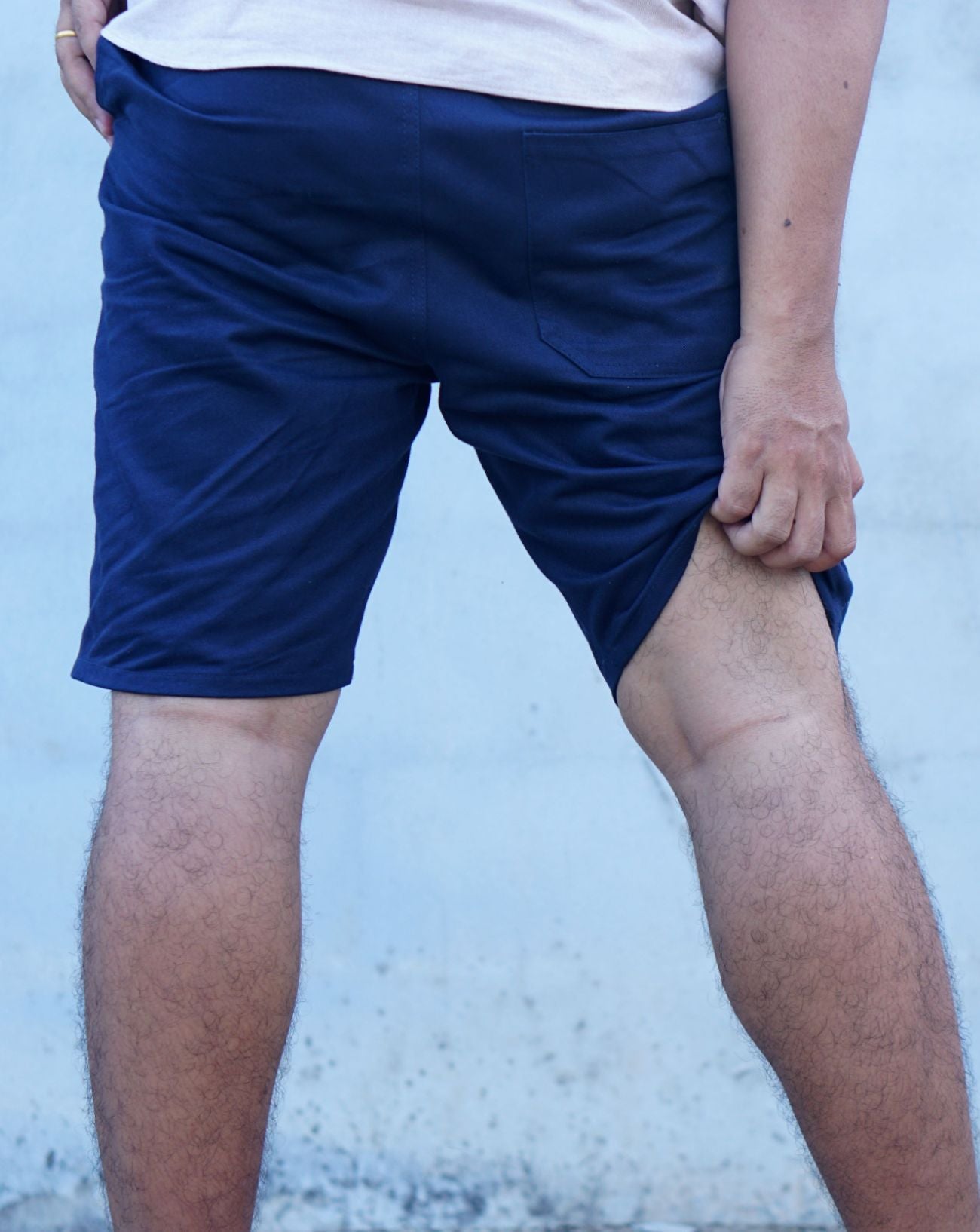Preventing chafing is as much about your personal choices and knowledge as it is about gear selection. Read our tips to prevent chafing so that you can stay active and chafe-free!
Understanding Chafing - Know Your Enemy
As any runner learns over time, there are plenty of obstacles that can derail a training cycle. Some of them lie outside of your control, like injury or an unexpectedly stressful run of weeks at work. In these cases, you usually have to chalk it up to bad luck, do the best you can under the circumstances, and move on.
But, there are other obstacles that, while they could ruin a training cycle, can be avoided with proper planning.
One of these is chafing.
What is Chafing?
Chafing is caused when the friction of repeated rubbing of the skin causes the skin to tear and exposes the layer of skin below. This exposed layer can easily become raw and irritated. Chafing can occur when skin rubs against skin or when it rubs against clothing. Some common areas where chafing occurs are inner thighs, armpits, and nipples, but it can happen basically anywhere.
Factors that can increase chafing
- Hot and humid weather
- Rainy weather
- Loose fitting clothing
- Non-breathable fabrics
- Dry skin
- Excess weight or large muscles
- Sensitive skin
Chafing can range from a mild annoyance that makes a single run a bit less pleasant to something that lingers and threatens to mess up multiple runs or even force you to take some time off for the skin to heel. Luckily, chafing is quite easy to prevent.
Tips to Prevent Chafing
Proper fit ≠ as tight as possible
Chafing can be caused by clothing that is too loose OR too tight. Ill-fitting clothing is the most common cause of fabric-on-skin chafing. Clothing that is too loose will move around a lot during a run, and that constant rubbing can easily irritate the skin.
On the other hand, clothing that is too tight can dig in and similarly cause irritation. A too-tight sports bra is a common case of this.
When looking for running clothing, look for something skin-tight or fitted such that it doesn’t move around a lot when you’re running.
Wear nylon or polyester
The material clothing is made out of is also an important factor. Avoid cotton like the plague.
Cotton absorbs moisture and stays wet, which can increase friction and irritation. Instead, look for apparel made with moisture-wicking fabrics such as polyester, nylon, or other synthetic materials. Additionally, seek out clothes without tags and seams. It may seem minor, but these can rub and cause chafing as well.
Clothing recommendations by body area
-
Groin – Consider running-specific underwear, which will be tight-fitting and moisture-wicking. Most running shorts come with a built-in liner, which can help. However, these can stretch out over time and cause chafing. Older running shorts are a common culprit here.
-
Inner thighs – Your best bet is to wear a pair of tights or half tights to prevent both skin-on-skin and fabric-on-skin rubbing. If tights aren’t your thing, two-in-one running shorts are your friend. These look like normal running shorts, but contain a half-tight liner to keep your inner thighs chafe-free.
-
Nipples – For women, one of the most essential pieces of running gear is a properly-fitting sports bra. Stop in your local running store and get properly fitted for a running bra. Also, did you know that you should replace your sports bra every year? As you use your bra, it will stretch out which not only makes it less supportive, but will also increase the amount of rubbing that can occur.
- Armpits – Opting for a tank top is the best option here, but obviously the weather doesn’t always permit that. As we’ve discussed, your running shirts should be fitted, but your arms should be able to move freely. Shirts that are too tight around the shoulder and armpit will usually cause chafing. This is also a key area to avoid seams.
Know your body's hot spots
Let’s be honest: for most of us, rubbing is an inevitable consequence of moving our bodies. Some of us are carrying around some extra weight. Some have muscles that get in the way. Some of us just have larger thighs or thicker arms that make inner-thigh or armpit rubbing a certainty. The point is that everyone is going to have a regular hot spot for chafing, so be honest with yourself.

Know where your hot spots are and plan accordingly. If you need an extra layer to reduce friction in these areas, do it! There’s no harm in doubling down on strategies here. If you frequently get chafing on your inner thighs, for instance, putting Body Glide anti-chafing balm on underneath your tights is perfectly acceptable, especially on long runs or in humid or wet weather where chafing is most likely.
Avoid shaving chafe-prone areas
Rough stubble in the armpits, inner thighs, or groin can cause chafing so either eschew shaving these areas or make sure these areas are smooth and freshly shaven. If you have a marathon or long run coming up, either avoid shaving in the days leading up to it or make sure to use a sharp razor to avoid leaving any stubble.
Use anti-chafing gear and lubricants
Applying an anti-chafe balm is the most fool-proof way to avoid chafing, especially skin-on-skin chafing. Lubrication can be essential, especially for folks with excess weight, larger muscles, or sensitive skin for whom strategies like good clothing are only one front in the battle against chafing.
Vaseline or petroleum jelly work, but they can be quite messy and can stain clothing. Body Glide is a non-oily, mess-free anti-chafing balm that rubs on like a deodorant stick. You can safely apply it anywhere you’re worried about chafing or blistering – inner thighs, armpits, nipples, under breasts, feet. It’s designed specifically for endurance sports, so you can be sure it will last for the entire run. There is also a product called NipGuards specifically designed to prevent nipple chafing.
Stay hydrated
As a runner, you already know the importance of hydration for performance and overall health, but proper hydration can also help prevent chafing. Have you ever finished a long run to find streaks of salt crystals on your face and clothing? These salt crystals are rough and can increase friction when rubbing against skin. Proper hydration decreases the salt content of your sweat and ensures these salt crystals don’t build up on your skin and cause chafing.
Mind your gear
The extra gear you bring with you on a run like a hydration vest, running belt, phone armband, or dog leash belt, you’re introducing new potential hot spots for chafing. As with clothing, getting the right fit is the most important thing you can do to avoid chafing. Anything that’s sliding or bouncing around while you run could cause chafing, so make sure all your straps are tight or you’re wearing gear that is the right size and fit for your body.
This is another time to break out the Body Glide. Lubricate the areas around straps or wherever your vest or belt will touch your body to make sure that rubbing and bouncing doesn’t chafe. If you’re running with a vest or backpack, pack along a stick of Body Glide or some Vaseline to apply during the run if needed.









